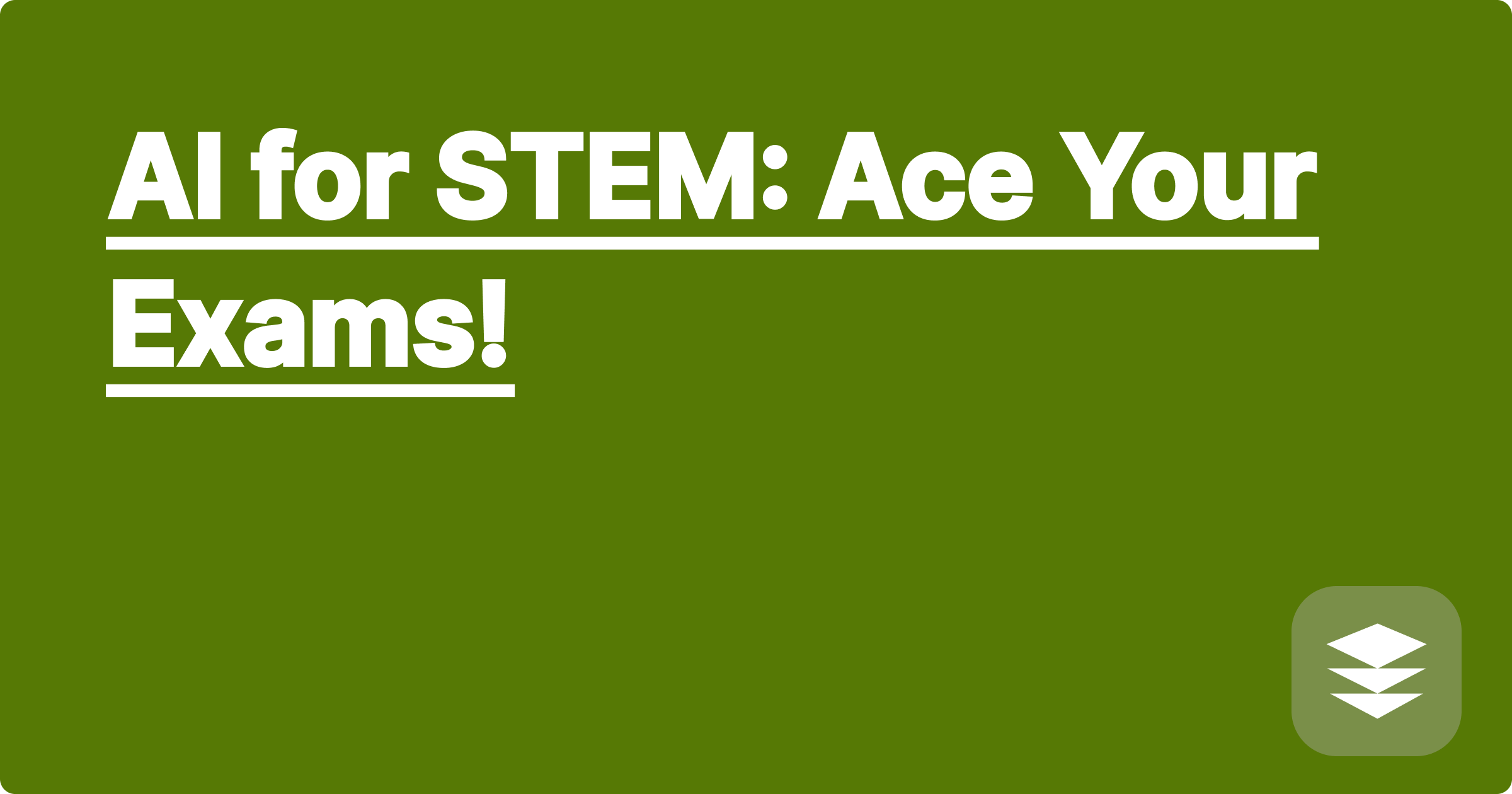
The world of STEM is demanding. From complex equations in physics to intricate biological processes, the sheer volume of information and the pressure to perform can feel overwhelming. Long nights in the library, endless problem sets, and the looming fear of exams are a familiar reality for many STEM students. But what if there was a way to not just survive, but thrive in this challenging environment? Artificial intelligence is rapidly transforming the learning landscape, offering powerful tools to personalize learning, streamline research, and ultimately, ace those exams. This isn't about replacing hard work, but about working smarter, leveraging AI to amplify your efforts and achieve your academic goals.
This blog post isn't just another generic overview of AI tools like ChatGPT. We'll delve into the practical applications of AI, focusing on lesser-known tools and strategies specifically designed to help STEM students and researchers maximize their potential. Think of this as your insider's guide to leveraging AI for academic success, packed with actionable tips and tricks, real-world examples, and a dash of personal experience. Get ready to discover how AI can become your secret weapon in conquering the STEM world.
The core challenge for many STEM students lies in managing the sheer volume of information and the limited time available. Courses often cover vast amounts of material, requiring students to synthesize complex concepts and apply them to problem-solving scenarios. Research, too, demands extensive literature reviews, data analysis, and meticulous experimentation, all within tight deadlines. This constant pressure can lead to burnout, decreased motivation, and ultimately, suboptimal performance. Traditional study methods often fall short in addressing these challenges, leaving students feeling overwhelmed and struggling to keep up. This is where AI comes in, offering a powerful suite of tools to personalize learning, automate tedious tasks, and unlock new levels of efficiency.
Imagine having a personalized AI assistant, a General Purpose AI Partner (GPAI), by your side, ready to assist with everything from scheduling study sessions to analyzing complex datasets. GPAI can be conceptualized as a central hub integrating various AI tools to create a personalized learning and research ecosystem. For example, you can use GPAI to create a customized study plan based on your course syllabus, breaking down complex topics into manageable chunks. GPAI can also integrate with calendar applications to schedule study sessions, send reminders, and track your progress. Furthermore, GPAI can be used to analyze past exam papers, identify key concepts, and generate practice questions tailored to your specific weaknesses. This personalized approach allows you to focus your efforts where they matter most, maximizing your learning efficiency.
Beyond GPAI, a plethora of niche AI tools cater specifically to STEM disciplines. While ChatGPT and Stable Diffusion are valuable general-purpose tools, exploring specialized AI applications can unlock significant advantages. Consider Wolfram Alpha, a computational knowledge engine that excels at solving complex mathematical equations, providing step-by-step solutions, and visualizing mathematical concepts. For biology students, tools like Biopython offer powerful capabilities for analyzing biological data, performing sequence alignments, and predicting protein structures. In the realm of physics, simulations powered by AI can help visualize complex phenomena and test hypotheses in a virtual environment. These are just a few examples of the many specialized AI tools available to STEM students and researchers.
Integrating AI into your workflow doesn't require a complete overhaul of your study habits. Start by identifying your biggest pain points. Are you struggling with time management? Do you find it difficult to synthesize complex information? Once you've pinpointed your challenges, explore AI tools that address those specific needs. For example, if you're struggling with time management, use a GPAI integrated with a calendar application to schedule study sessions and track your progress. If you're overwhelmed by the volume of reading material, use a summarization tool to extract key concepts and create concise notes. Begin with one or two tools and gradually incorporate more as you become comfortable with their functionalities. The key is to experiment and find what works best for you.
In my own experience, using AI tools has significantly improved my research efficiency. When working on a project involving complex data analysis, I leveraged a specialized AI tool to automate the data cleaning and preprocessing steps. This saved me hours of manual work, allowing me to focus on the more critical aspects of the research, such as interpreting the results and drawing meaningful conclusions. Another example involves using a GPAI to manage my literature review. By integrating the GPAI with a reference management software, I was able to quickly organize and synthesize a large number of research articles, saving valuable time and ensuring a comprehensive review of the relevant literature. These are just two examples of how AI can be applied in real-world STEM scenarios.
To truly harness the power of AI, it's crucial to adopt a strategic approach. Don't rely solely on AI to do the work for you. Instead, view AI as a partner, a powerful tool to augment your own abilities. Focus on developing a deep understanding of the underlying concepts, using AI to facilitate learning and streamline the process. Be mindful of the limitations of AI tools. While they can be incredibly helpful, they are not infallible. Always double-check the results and ensure they align with your understanding of the subject matter. Finally, embrace experimentation. The world of AI is constantly evolving, with new tools and applications emerging all the time. Don't be afraid to try new things and discover what works best for you.
Embarking on this AI-powered learning journey can transform your academic experience. Start by identifying your specific needs and exploring the wide array of AI tools available. Experiment, adapt, and discover how AI can empower you to achieve your academic goals. The future of learning is here, and it's powered by AI. Don't get left behind.